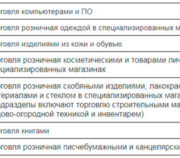Бенчмаркинг для развития бизнеса
Содержание:
Advantages of Benchmarking Process
Lowering Labor Costs
One advantage of benchmarking may be lower labor costs. For example, a small manufacturing company may study how a top competitor uses robots for several basic plant functions. These robots may help the competitor save a significant amount of money on labor costs. Company managers may obtain information on these robotics systems through the competitor’s website or online articles. They may also identify the company that sold the competitor the robots. Subsequently, the company using benchmarking may call the robot manufacturer to help set up its own system.
Improving Product Quality
Companies may also use benchmarking to improve product quality. Engineers sometimes purchase leading competitors’ products. They may then take them apart, study them and determine how the competitors’ products outlast or outperform others in the industry. Chemical engineers may study food or cleaning products in a similar manner. They can then compare various elements contained in competitive products to their own product line. Subsequently, improvements can be made to product quality.
Increasing Sales and Profits
A company that uses benchmarking to improve its functions, operations, products and services may enjoy increases in sales and profits. Customers are likely to notice these improvements. The benchmarking company may also promote is improvements through company brochures, its sales reps, magazine and television ads. These efforts are likely to increase sales, especially among core customers. Companies that operate more efficiently due to benchmarking can drastically lower their expenses. These savings can be lead to greater profits.
Considerations
Some organizations use internal benchmarking to improve performance in different departments. Department managers may study and emulate the best practices of one particular department. These changes may spark improvements among all departments. Internal benchmarking has its limitations, however. The company’s top department may not be functioning as efficiently as others in the industry. This means the other departments were not truly benchmarking against the best departments out there.
Этапы бенчмаркинга
Для совершенствования деятельности применяются один или несколько видов бенчмаркинга. Объекты бенчмаркинга и направленность
исследований при этом может быть разной, однако основные этапы для всех видов бенчмаркинга будут одинаковыми. Эта последовательность
действий выработалась в результате практики применения бенчмаркинга многими организациями.
Основные этапы бенчмаркинга включают в себя:
Определение, анализ и детализация объекта бенчмаркинга. В качестве объекта могут быть выбраны процессы, услуги или продукты
организации
На этом этапе важно понять, сколько ресурсов и усилий организация готова потратить на процесс бенчмаркинга — будет ли
это разовое мероприятие или бенчмаркинг станет постоянной практикой организации.
Выявление и определение характеристик, по которым будет проводиться бенчмаркинг. Это могут быть важные потребительские
свойства продукта или услуги, или параметры качества процесса.
Формирование команды бенчмаркинга
В команду лучше включать специалистов из различных подразделений организации, чтобы была
возможность более широко и объективно оценить возможности как своих процессов (продуктов, услуг), так и процессов (продуктов,
услуг) партнеров по бенчмаркингу.
Выбор партнеров по бенчмаркингу. В качестве партнеров могут выступать организации-лидеры, добившиеся успеха в реализации
интересующих характеристик (определены на этапе 2). Партнером может быть одна организация или несколько. Если выполняется
внутренний бенчмаркинг, то такими партнерами будут смежные подразделения, процессы или продукты предоставляемые самой
организацией.
Сбор и анализ информации, необходимой для сравнения. Чтобы провести сравнение может потребоваться представить полученную
информацию в том же виде, как она представляется внутри организации. Например, если сравниваются технические характеристики
продукта, то у разных производителей набор этих характеристик может различаться. Характеристики необходимо будет привести к
единой «базе».
Проведение оценки возможности организации в достижении необходимых характеристик в сравнении с партнером (или партнерами)
по бенчмаркингу. Оценка может проводиться различными методами, которые позволяют оценить существующий «разрыв» между работой
собственной организации и работой партнера по бенчмаркингу (например, с помощью GAP – анализа).
Определение возможных изменений существующей практики работы. Создается «видение» будущего состояния организации. Это
видение должно быть основано на результатах адаптации процессов партнера по бенчмаркингу к условиям своей организации.
Разработка стратегических целей и планов по их реализации для достижения желаемого уровня характеристик. В зависимости от
масштабности изменений планы могут затрагивать изменение процессов, системы управления, организационной системы, культуру
исполнения работ и др. аспекты.
Реализация запланированных изменений и постоянный контроль за ходом преобразований в организации. Если необходимо, то
выполняются корректировки планов.
После достижения установленных целей и реализации планов принимается решение о повторении цикла и реализации всех этапов
бенчмаркинга для новых условий.
Прежде чем применять бенчмаркинг в качестве инструмента по совершенствованию деятельности организация должна решить, какой объем ресурсов она может на него выделить. Проводить бенчмаркинг лучше по хорошо отработанным методикам. Методика бенчмаркинга может значительно сэкономить время работы и ресурсы. Если принимается решение использовать бенчмаркинг в качество одного из инструментов постоянного совершенствования, то он может быть выделен в отдельный процесс.
Benchmarking Measures
One of benchmarking’s cardinal questions is that of what to measure. That depends on the nature of the business. The point is that you cannot chase 50 benchmarks at the same time. One macro benchmark is required which then might be broken down into a series of supporting micro measures.
Although it is fine to circulate such a measure, the most worthwhile aspect of the benchmarking process can be the opportunity for people in an organisation to see at first hand how other organisations go about their business. It is the process itself which is valuable; the voyage that is more educational than the reaching of the destination. Nevertheless, measurable performance falls into the three broad areas:
- Time measures should incorporate the process from start to finish. For example, from when a customer places an order to the time of receipt of goods and payment, thereby accounting for total lead time, product development time and productive time.
- Cost measures are the traditional basis of comparison between firms and, because of this, we are often most comfortable with these measures. Two which can be useful in benchmarking are total process cost per unit of output and return on assets.
- Quality measures should capture the errors, defects and waste attributable to processes. Some measures which should be used in achieving this include process variability, defects, process yields, customer perceived quality, cost of quality and quality improvement efforts.
Преимущества бенчмаркинга
В том случае, когда бенчмаркинг проведен правильно, он может дать компании много преимуществ. Критериями успешного проведения
бенчмаркинга являются правильно подобранная команда, глубокая детализация процессов, заинтересованность руководства в результатах,
интеграция результатов бенчмаркинга со стратегическими планами развития.
Во время выполнения работ команда бенчмаркинга имеет возможность посмотреть на свою организацию со стороны. Это позволяет выйти
за рамки ежедневной деятельности и существующие ограничения, и найти новые идеи по улучшению работы. За счет применения
бенчмаркинга можно избежать многих ошибок, а также повысить прибыль организации за относительно короткое время.
Process of Benchmarking
When it comes to Competitive Intelligence, there are a few simple tools that can provide for sophisticated comparisons of business functions between organizations that can help firms “benchmark” the constituent processes of the company with direct or indirect competitors, allowing a company to gain the upper hand in a marketplace. But, what is the process for setting the metrics, methodologies, milestones and comparisons which might be used to measure the success of a benchmarking function, or the success of a Strategic Planning department as a whole?
Benchmarking is best used and described as a framework for strategic planning in that, once elements of study are identified, metrics can be applied to the key success factors (KSFs) of the industry or marketplace and these measures or “benchmarks” are then used to develop future quality and market initiatives for the firm to enhance its overall competitive position.
It is generally considered that there are seven steps to this process, as explained below. However, this analysis of intra- and sometimes inter-industry competitors can form the foundation for future competitor analysis when the emphasis is placed upon the goals and financial capabilities of the competitor.
Seven Steps in the Benchmarking Process:
- Determine which functional areas within your operation are to be benchmarked — those that will benefit most from the benchmarking process, based upon the cost, importance and potential of changes following the study.
- Identify the key factors and variables with which to measure those functions — usually in the general form of financial resources and product strategy.
- Select the best-in-class companies for each area to be benchmarked — those companies that perform each function at the lowest cost, with the highest degree of customer satisfaction, etc. Best-in-class companies can be your direct competitors (foreign or domestic), or even companies from a different industry (parallel competitors with replacement or substitute products or services; latent competitors which might backwards- or forwards-integrate into your market; or out-of-industry firms with whom you do not compete, but which have best-in-class areas to be studied such as FedEx or Wal-Mart in logistics).
- Measure the performance of the best-in-class companies for each benchmark being considered — from sources such as the SEC, companies themselves, articles in the press or trade journals, analysts in the market, credit reports, clients and vendors, trade associations, the government or from interviews with other organizations willing to share their prior research or “swap” it with you.
- Measure your own performance for each variable and begin comparing the results in an “apples-to-apples” format to determine the gap between your firm and the best-in-class examples. Always feel free to estimate results, as exact measures are usually disproportionately difficult to obtain and often do not significantly add value to the study.
- Specify those programs and actions to meet and surpass the competition based on a plan developed to enhance those areas that show potential for compliment. The firm can choose from a few different approaches — from simply trying harder, to emulating the best-in-class, changing the rules of the industry or leapfrogging the competition with innovation or technology from outside the industry.
- Implement these programs by setting specific improvement targets and deadlines, and by developing a monitoring process to review and update the analysis over time. This will also form the basis for monitoring, revision and re-calibration of measurements in future benchmarking studies.
Basics of Benchmarking
As individuals do swot analysis, companies have to do swot analysis for their competitive advantage and for long term survival. The external competitive pressure on the system had made its absolutely necessary to benchmark with similar organizations or organizations of different breed.
However, benchmarking cannot cure all diseases of the company. Why the companies benchmark? Instead of being inward looking companies, large corporations are more outward looking nowadays. Liberalization and globalization had made the industries very competitive. Equally the transfer and adoption of technologies are more easier nowadays.

The other advantage of benchmarking is the lowest cost associated with the process. The companies do not invest sizable investments in research and development and there is no threat of any sunk cost. The process or practice or technology are readily available and easily be plagiarized.
A company that decides to undertake a bench-marking initiative should consider the following questions: When? Why? Who? What? and How?
When?
Benchmarking can be used at any time, but is usually performed in response to needs that arise within a company. Some potential “triggers” for the benchmarking process include:
- quality programs
- cost reduction/budget process
- operations improvement efforts
- management change
- new operations/new ventures
- rethinking existing strategies
- competitive assaults/crises
Why?
This is the most important question in management’s decision to begin the benchmarking process. Following are several reasons why companies may embark upon benchmarking:
- to signal management’s willingness to pursue a philosophy that embraces change in a proactive rather than reactive manner;
- to establish meaningful goals and performance measures that reflect an external/customer focus, foster “quantum leap” thinking, and focus on high-payoff opportunities;
- to create early awareness of competitive disadvantage; and
- to promote teamwork that is based on competitive need and is driven by concrete data analysis, not intuition or gut feeling.
Who?
Companies may decide to benchmark internally, against competitors, against industry performance, or against the “best of the best.” Internal benchmarking is the analysis of existing practice within various departments or divisions of the organization, looking for best performance as well as identifying baseline activities and drivers. Competitive benchmarking looks at a company’s direct competitors and evaluates how the company is doing in comparison. Knowing the strengths and weaknesses of the competition is not only important in plotting a successful strategy, but it can also help prioritize areas of improvement as specific customer expectations are identified. Industry benchmarking is more trend-based and has a much broader scope. It can help establish performance baselines. The best-in-class form of benchmarking examines multiple industries in search of new, innovative practices. It not only provides a broad scope, but also it provides the best opportunities over that range.
What?
Benchmarking can focus on roles, processes, or strategic issues. It can be used to establish the function or mission of an organization. It can also be used to examine existing practices while looking at the organization as a whole to identify practices that support major processes or critical objectives. When focusing on specific processes or activities, the depth of the analysis is a key issue. The analysis can take the form of vertical or horizontal benchmarking. Vertical benchmarking is where the focus is placed on specific departments or functions, while horizontal bench-marking is where the focus is placed on a specific process or activity. Concerning strategic issues, the objective is to identify factors that are of greatest importance to competitive advantage, to define measures of excellence that capture these issues, and to isolate companies that appear to be top performers in these areas.
How?
Benchmarking uses different sources of information, including published material, trade meetings, and conversations with industry experts, consultants, customers, and marketing representatives. The emergence of Internet technology has facilitated the bench-marking process. The Internet offers access to a number of databases containing performance indicators for thousands of different companies. The Internet also enables companies to conduct electronic surveys to collect bench-marking data. How a company benchmarks may depend on available resources, deadlines, and the number of alternative sources of information.
Successful Benchmarking Process
There are several keys to successful benchmarking process. Management commitment is one that companies frequently name. Since management from top to bottom is responsible for the continued operation and evaluation of the company, it is imperative that management be committed as a team to using and implementing benchmarking strategies. A strong network of personal contacts as well as having an open mind to ideas is other keys. In order to implement benchmarking at all stages, there must be a well-trained team of people in order for the process to work accurately and efficiently. Based on the information gathered by a well-trained team, there must also be an effort toward continuous improvement. Other keys include a benchmarking process that has historical success, sufficient time and staff, and complete understanding of the processes to be benchmarked.
In almost any type of program that a company researches or intends to implement, there must be goals and objectives set for that specific program. Benchmarking is no different. Successful companies determine goals and objectives, focus on them, keep them simple, and follow through on them. As in any program, it is always imperative to gather accurate and consistent information. The data should be understood and able to be defined as well as measured. The data must be able to be interpreted in order to make comparisons with other organizations. Lastly, keys to successful benchmarking include a thorough follow-through process and assistance from consultants with experience in designing and establishing such programs.
Виды бенчмаркинга
В зависимости от объектов сравнения бенчмаркинг может подразделяться на несколько видов:
-
Внутренний бенчмаркинг – при этом виде бенчмаркинга осуществляется сравнение процессов (продуктов, услуг) внутри
организации. В качестве объектов выбираются близкие или похожие процессы (продукты, услуги). При внутреннем бенчмаркинге довольно легко собрать данные,
однако возможности для сравнения ограничены, и результаты могут оказаться предвзятыми. -
Конкурентный бенчмаркинг – сравнение проводится с прямыми конкурентами (по предоставляемым продуктам или услугам),
работающими на местном, региональном или международном рынке. Для этого вида бенчмаркинга необходимо выбирать конкурентов, находящихся на другом «уровне»
рынка. Например, организация, работающая на местном рынке, может выбрать для сравнения организацию, работающую на международном рынке. В этом случае
данные, полученные при сравнении, будут более обоснованными и важными, но их довольно трудно получить. -
Функциональный бенчмаркинг – сравниваются процессы собственной организации с похожими процессами другой организации, но
работающей в другой сфере деятельности. При таком виде бенчмаркинга можно получить объективные и важные данные с меньшими усилиями, применяя этичные и
легальные методы получения информации. -
Обобщенный бенчмаркинг – для этого вида бенчмаркинга отбираются организации, которые обладают лучшими в своем сегменте
процессами и подходами. Такие организации открыто публикуют информацию о деятельности (примерами могут служить публикации по производственной системе
Toyota, или по системе 6–сигм компании Motorola). Из этих процессов и подходов выбираются для изучения и сравнения наиболее подходящие. После чего они
адаптируются для условий своей собственной организации.
В качестве источников информации для выбора «эталона» по бенчмаркингу используют различные источники. Например, публикации по коммерческой деятельности,
базы данных консалтинговых и аудиторских компаний по организациям, применяющим лучшие практики (например, GMP), списки победителей
премий по качеству и др.







